Welcome to the ultimate guide for recreating the iconic, irresistible Cheesecake Factory Brown Bread at home! This beloved bread, known for its distinct savory-sweet flavor and wonderfully soft yet hearty texture, has captivated diners for years. If you, like many, find yourself craving a taste of this restaurant favorite but don’t have a Cheesecake Factory nearby, then you’re in for a treat. This meticulously crafted copycat recipe brings that signature taste directly to your kitchen, allowing you to enjoy warm, freshly baked brown bread whenever the craving strikes.
There’s nothing quite like the aroma of freshly baked bread wafting through your home. It’s a culinary experience that’s both comforting and incredibly rewarding. Our version of Cheesecake Factory Brown Bread is not just a close replica; it’s designed to be an accessible and enjoyable baking project for home cooks of all skill levels. Using readily available ingredients and straightforward steps, you’ll be amazed at how easily you can achieve this gourmet bread. Prepare to impress your family and friends with loaves that rival the original, and perhaps even surpass it in homemade goodness. Get ready to embark on a delightful baking journey that ends with perfectly golden-brown, utterly delicious bread!
The Enchanting Allure of Cheesecake Factory Brown Bread
For those who’ve experienced it, the Cheesecake Factory’s brown bread is more than just a starter; it’s a memorable part of the dining experience. Its subtly sweet and malty notes, combined with a dense yet tender crumb, make it uniquely satisfying. Many also find its flavor profile reminiscent of the popular bread served at Outback Steakhouse, though our copycat recipe offers a more balanced molasses presence. This recipe has been fine-tuned to capture the essence of what makes this bread so special: its deep, inviting color, its satisfying chew, and that addictive flavor that keeps you reaching for another slice. Whether slathered with butter or used to sop up savory sauces, this homemade brown bread is guaranteed to become a new family favorite. It’s a fantastic way to bring a touch of restaurant-quality magic to your dinner table without the need for a reservation.
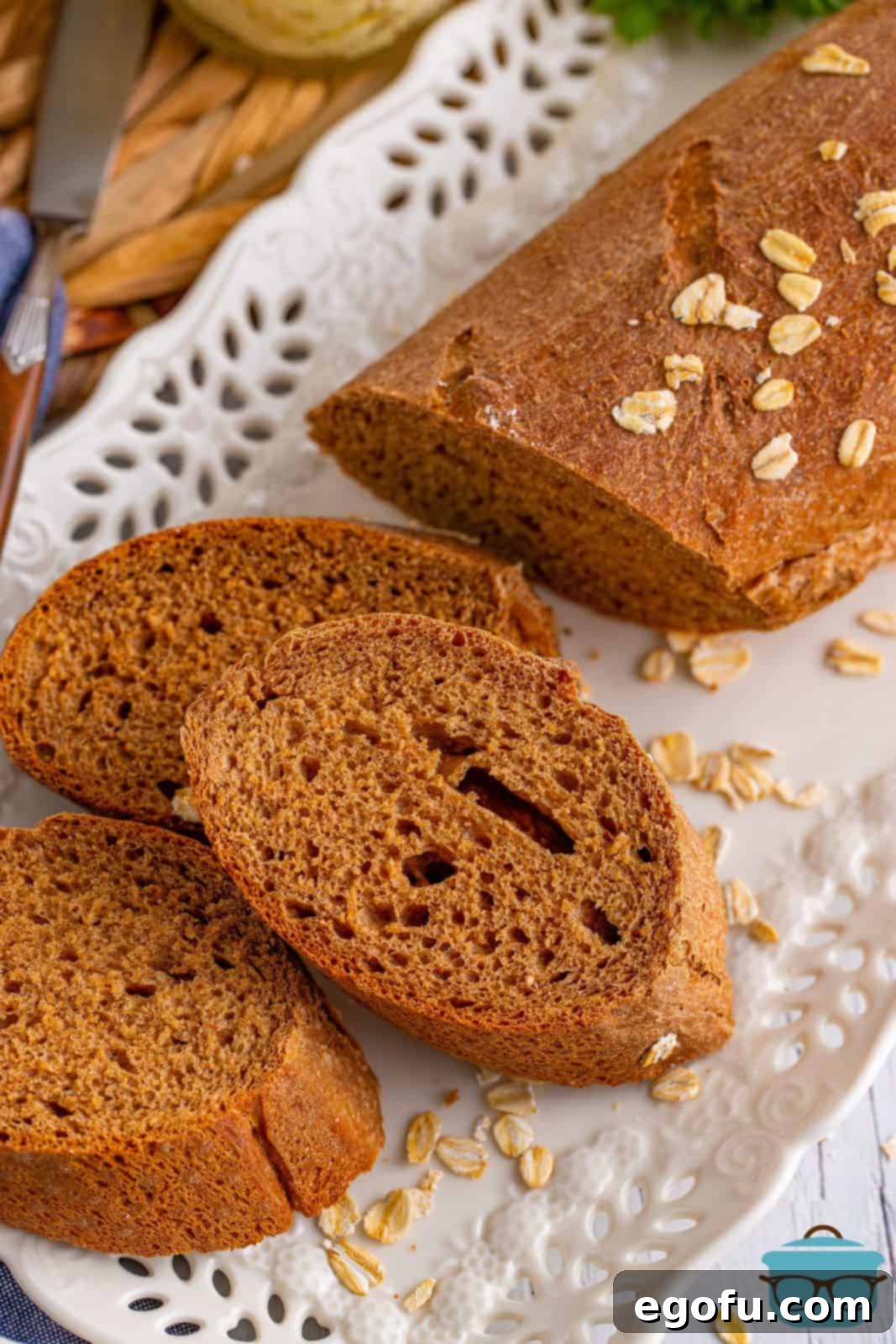
Frequently Asked Questions About Baking Brown Bread
Brown bread, in this context, refers to a specific type of bread primarily made with whole wheat flour, giving it a hearty texture and wholesome flavor. Its signature dark color and subtle sweetness come from the inclusion of molasses. Additionally, a surprising yet essential combination of cocoa powder and instant coffee powder contributes to its deep hue and complex flavor profile, enhancing the richness without making the bread taste like chocolate or coffee.
The distinction lies in their processing. Unsulphured molasses is derived from mature sugarcane, undergoing a natural clarification and concentration process that yields its naturally dark color and rich, intense flavor. Sulphured molasses, on the other hand, is made from younger sugarcane, and sulfur dioxide is added as a preservative during its concentration. For nearly all baking recipes, including this brown bread, unsulphured molasses is the preferred choice due to its purer taste and the fact that it’s what you’ll most commonly find on grocery store shelves. It ensures the bread develops its authentic, deep molasses flavor.
Absolutely! While a baguette pan helps achieve that classic, uniform shape, it’s not strictly necessary. You can easily create beautiful loaves by simply shaping the dough into long logs by hand and placing them on a standard baking sheet lined with parchment paper. The bread will still bake perfectly and taste incredible, even if the shape is slightly different. If you find yourself frequently baking baguettes or similar shaped breads, a baguette pan is a worthy, inexpensive investment available online or at most kitchen supply stores.
This is one of the “secret ingredients” that truly elevates this copycat recipe! Neither the cocoa powder nor the instant coffee powder are added for their individual flavors to be prominent. Instead, they work synergistically to deepen the bread’s color, giving it that characteristic rich brown hue, and to enhance the overall complexity and depth of the existing flavors, particularly the molasses. They subtly round out the taste profile, making it more authentic to the original without any discernible chocolate or coffee notes. Don’t skip these ingredients for the best results!
While you can substitute all-purpose flour, bread flour is highly recommended for achieving the ideal texture in this recipe. Bread flour boasts a higher protein content, which translates to greater gluten development during kneading. This increased gluten provides a stronger, more elastic structure, resulting in a bread that is wonderfully chewy, has a better rise, and a firmer, more satisfying crumb. Using all-purpose flour will still yield delicious bread, but it may have a slightly softer, less chewy texture. For that authentic Cheesecake Factory brown bread experience, stick with bread flour if possible.
To maintain its freshness, store your cooled brown bread in an airtight container at room temperature. It will remain delicious for up to 4-5 days. For longer storage, this bread freezes beautifully. Once the loaves are completely cool, wrap them tightly in plastic wrap, then place them in a large freezer-safe bag. They will keep well in the freezer for up to 3 months. To defrost, transfer the frozen bread to the refrigerator overnight, then allow it to come to room temperature on your countertop before serving. You can also briefly warm it in the oven for that “fresh out of the oven” experience.

Essential Ingredients for Cheesecake Factory Brown Bread
Gathering your ingredients is the first step towards baking this incredible brown bread. Each component plays a vital role in achieving the perfect flavor and texture. Ensure all ingredients are fresh and measured accurately for the best results.
- Warm water (approximately 105-110°F)
- Active dry yeast
- Granulated sugar
- Whole wheat flour
- Unsweetened cocoa powder
- Instant coffee powder
- Fine sea salt
- Honey
- Unsulphured molasses
- Salted butter (melted and cooled)
- High-protein bread flour
- Cooking spray
- Cornmeal or rolled oats (for dusting the tops)
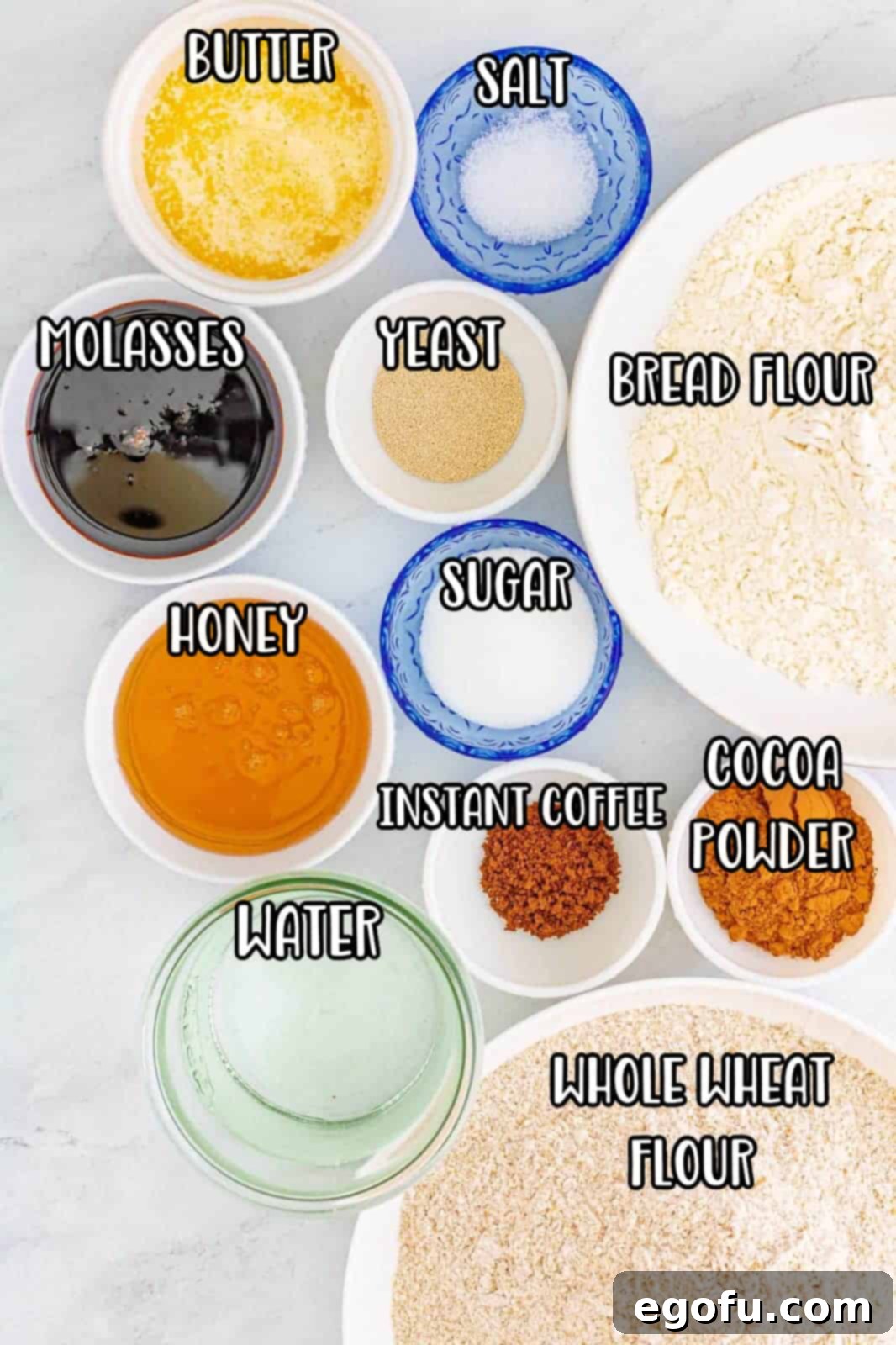
Baking Excellence: How to Make Cheesecake Factory Brown Bread
Creating this copycat brown bread is a rewarding process that comes together smoothly with a little attention to detail. Follow these steps carefully to ensure a perfect loaf every time.
- Activate the Yeast: In the bowl of a stand mixer fitted with the dough hook attachment, combine the warm water, active dry yeast, and granulated sugar. Stir gently a few times to ensure everything is moistened. Allow this mixture to sit undisturbed for about 5-10 minutes. During this time, the yeast should become active, forming a frothy, bubbly layer on the surface. This indicates your yeast is alive and ready to work!
- Prepare Dry Ingredients: While your yeast is proofing, grab a medium-sized mixing bowl. Whisk together the whole wheat flour, cocoa powder, instant coffee powder, and salt. Make sure these dry ingredients are thoroughly combined to ensure even distribution throughout the dough. Set this bowl aside for a moment.
- Combine Wet Ingredients: Once your yeast mixture is visibly bubbly and active, add the honey, molasses, and melted (and slightly cooled) salted butter to the stand mixer bowl. Stir these wet ingredients into the yeast mixture until they are well combined, creating a rich, fragrant liquid base.
- Incorporate Dry into Wet: Gradually add the reserved dry ingredient mixture to the wet ingredients in the stand mixer. Start on a low speed, allowing the flours and powders to slowly incorporate. Use a spatula to scrape down the sides of the bowl as needed, ensuring all ingredients are mixed.
- First Addition of Bread Flour: Add 2 ½ cups of the bread flour to the mixture. Continue mixing on low speed until the flour is fully incorporated and a shaggy dough begins to form.
- Adding Remaining Bread Flour and Kneading: Increase the mixer speed to low. Continue adding the remaining bread flour, a little at a time (up to 3-4 cups total), until the dough starts to pull away cleanly from the sides of the mixer bowl. It’s okay if a small amount still sticks to the very bottom; the consistency is key. (Note: The exact amount of bread flour needed can vary based on humidity levels in your kitchen). Once the dough largely clears the sides, increase the mixer speed to medium-high and knead the dough for 6-7 minutes. The dough should become smooth, elastic, and springy. If it begins to stick to the sides again during kneading, add a tablespoon of bread flour at a time until it’s clean once more.
- First Rise (Bulk Fermentation): Lightly spray a large, clean bowl with cooking spray. Transfer the kneaded dough to this bowl, then lightly spray the top of the dough with cooking spray as well. Cover the bowl snugly with plastic wrap or a clean kitchen towel. Place it in a warm, draft-free spot and allow the dough to rise until it has doubled in size. This typically takes anywhere from 45 to 90 minutes, depending on the warmth of your environment.
- Punch Down and Divide Dough: Once the dough has doubled, gently punch it down in the bowl to release the air. Transfer the dough to a lightly floured, clean work surface. Divide the dough evenly into four equal portions.
- Shape the Loaves: Take each portion of dough and, using your hands, roll it out into a long, uniform log shape, similar to a baguette. If using a baguette pan, carefully place each log into its designated section. If you don’t have a baguette pan, arrange the shaped logs on a parchment-lined baking sheet, leaving ample space between them.
- Second Rise (Proofing) & Topping: Lightly spray the tops of your shaped loaves with more cooking spray. Generously sprinkle them with cornmeal or rolled oats. Gently press the cornmeal or oats into the dough to help them adhere during baking. Cover the loaves again with plastic wrap or a clean kitchen towel and allow them to proof for another 30 minutes. They should almost double in size once more.
- Preheat Oven and Bake: While the bread is proofing for the second time, preheat your oven to 375°F (190°C). Once the oven is ready and the bread has finished proofing, use a sharp knife or baker’s lame to score the top of each loaf 4-5 times diagonally. This helps the bread expand evenly and creates a beautiful crust. Place the baguette pan (or baking sheet) directly into the preheated oven. Bake for 20-25 minutes, or until the outside of the bread is golden brown, crusty, and no longer appears shiny.
- Check for Doneness & Serve: For precise doneness, you can use an instant-read thermometer to check the internal temperature of a loaf. The bread is fully baked when it reaches an internal temperature of 200-210°F (93-99°C). Once baked, remove the bread from the oven and let it cool slightly on a wire rack before slicing and serving. Enjoy your homemade Cheesecake Factory Brown Bread warm with butter, or alongside your favorite meal!
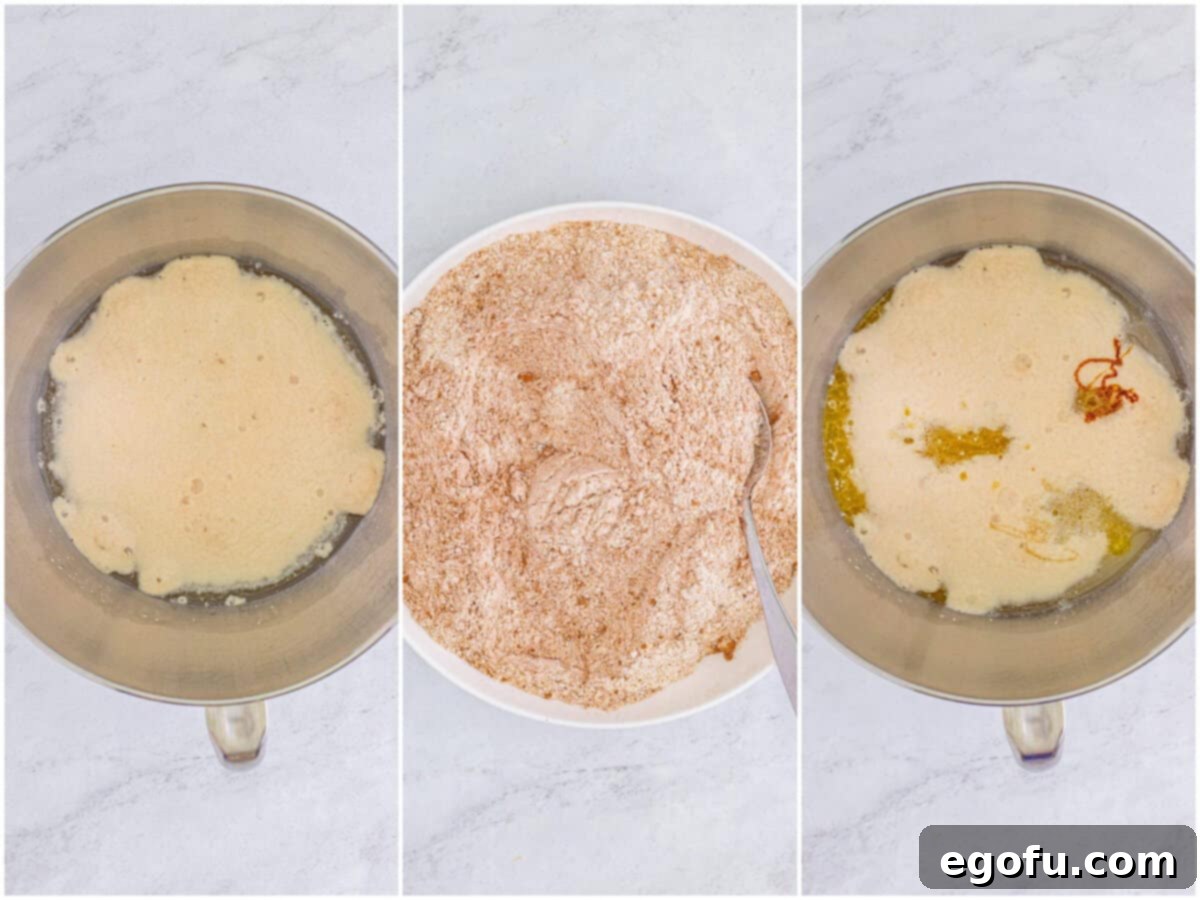
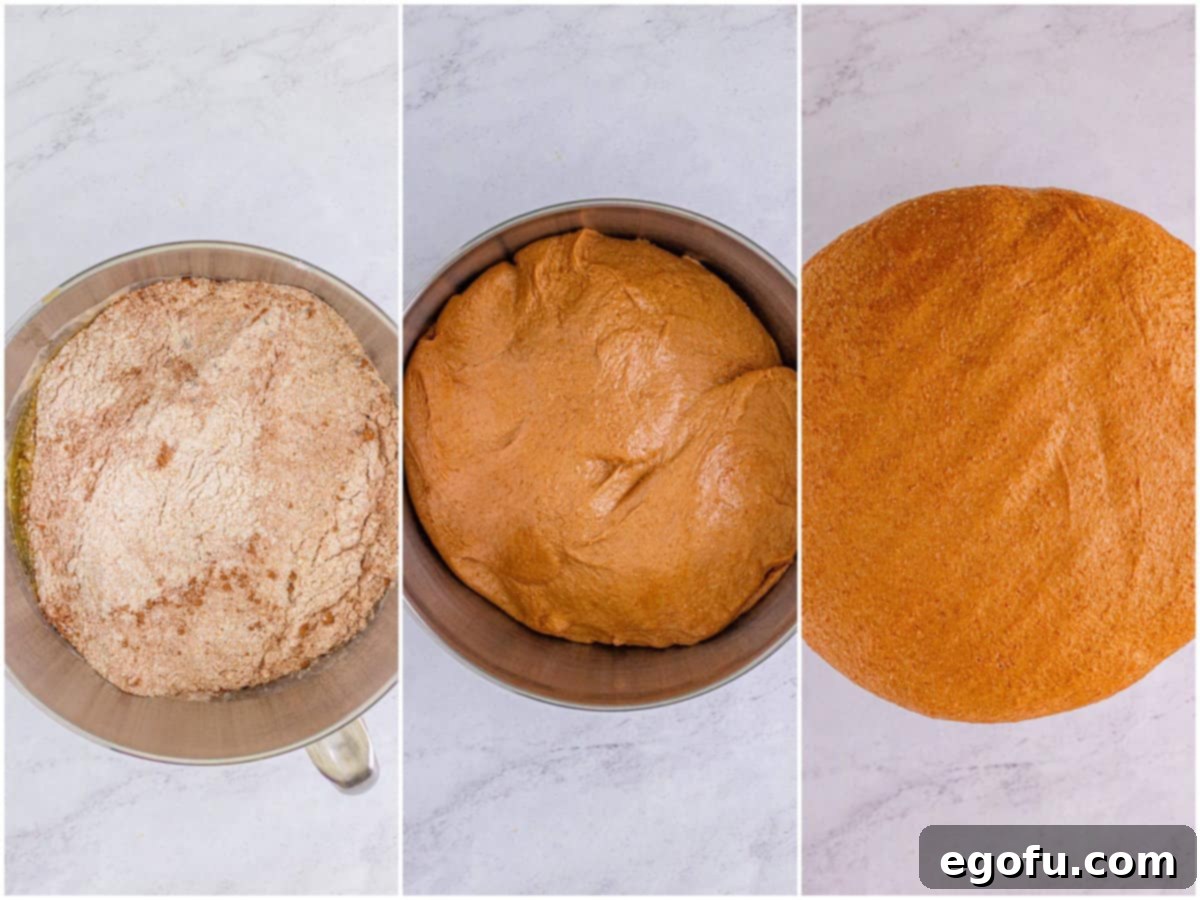
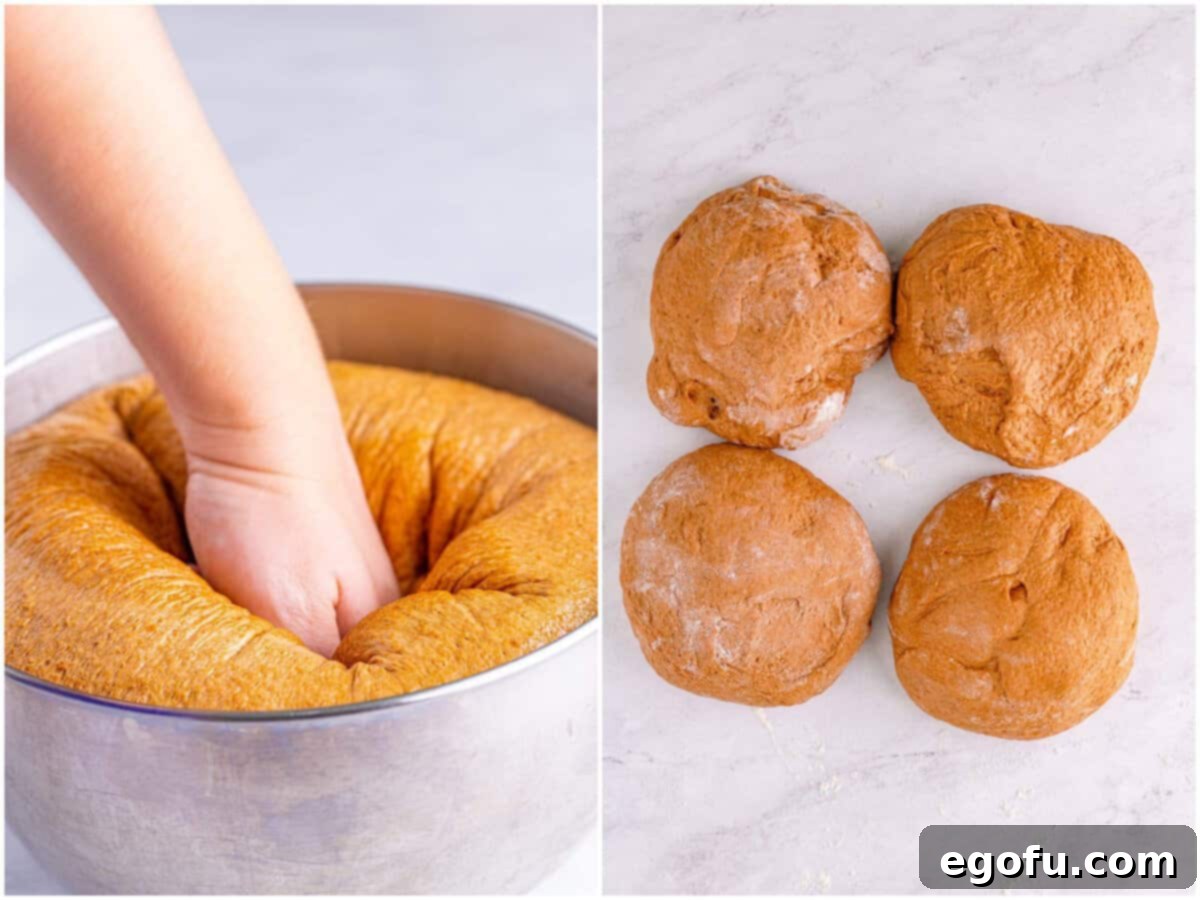

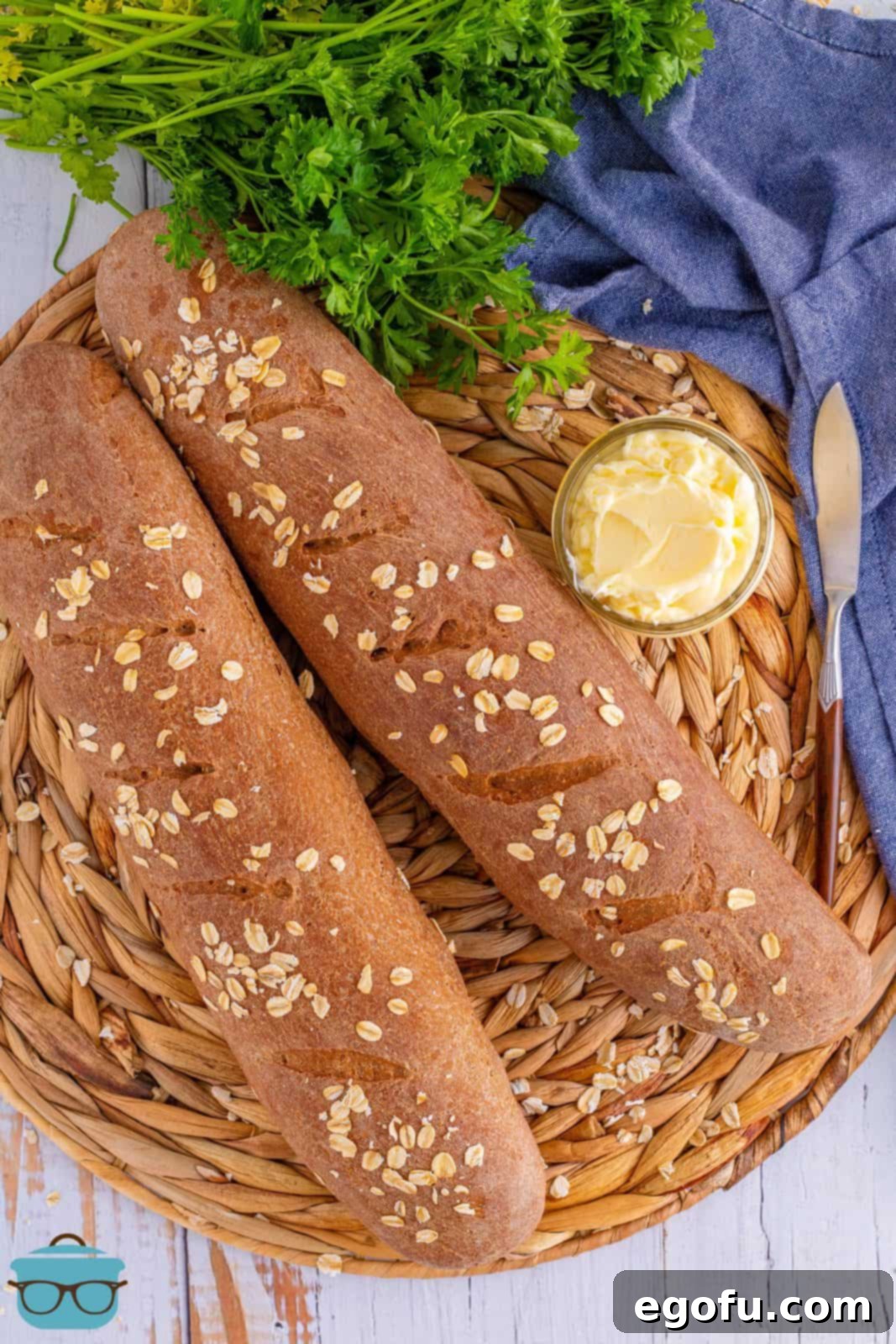
The satisfaction of pulling these fragrant, perfectly baked loaves from your oven is unparalleled. Each bite offers that familiar, comforting blend of sweet and earthy notes that makes Cheesecake Factory Brown Bread a true classic. Now, let’s explore some complementary recipes to enhance your culinary repertoire.
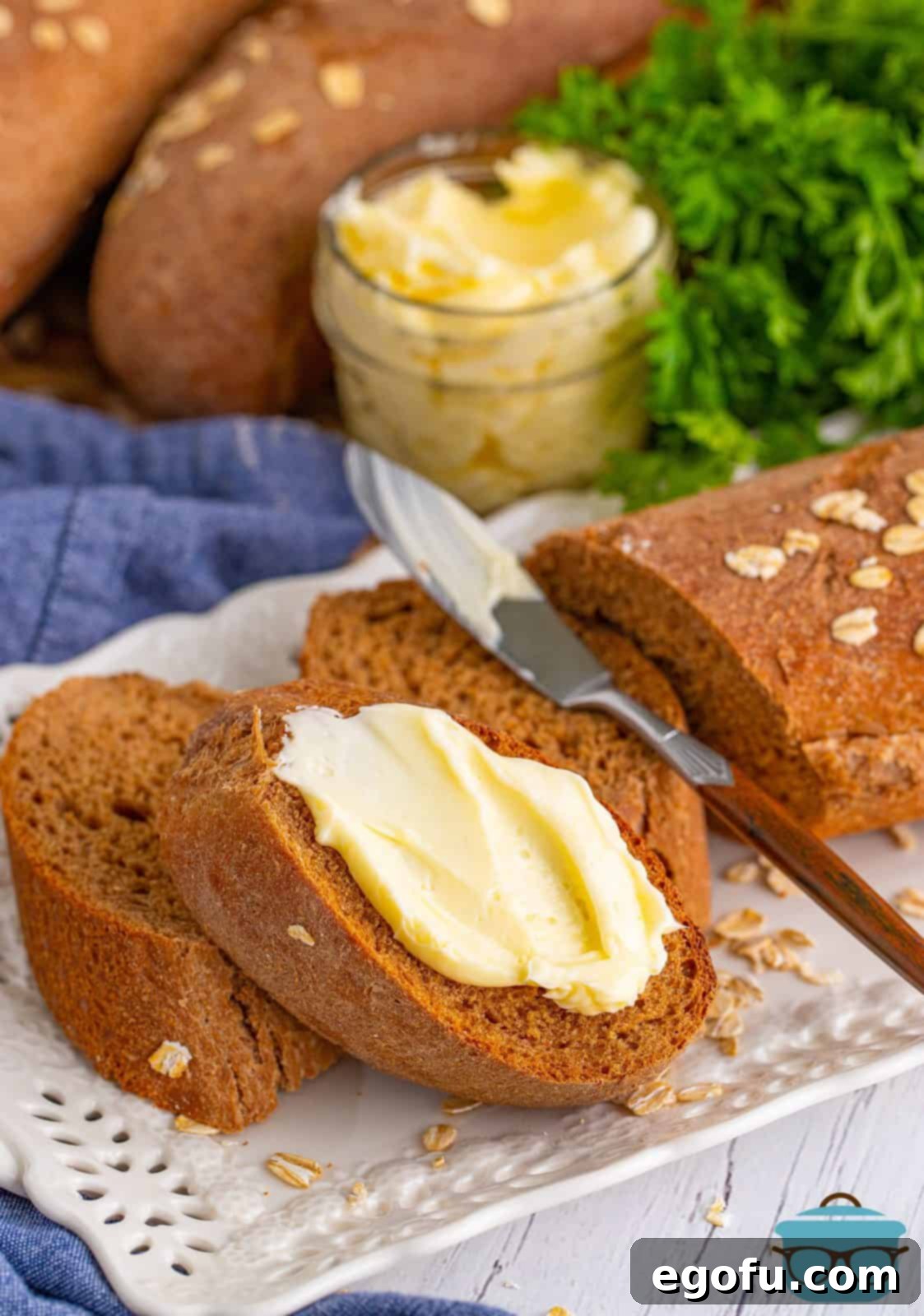
Discover More Delicious Bread & Dessert Recipes!
If you’ve enjoyed baking this Cheesecake Factory Brown Bread, you’ll love exploring other recipes that offer similar comfort and flavor. Here are some fantastic options to expand your baking skills and satisfy your cravings:
- Red Velvet Cheesecake Cake (A delightful shortcut to a Cheesecake Factory-inspired dessert)
- Cheesecake Factory Chicken Costoletta
- No-Knead Dutch Oven Bread
- Easy Homemade Beer Bread
- Simple French Bread
- Fluffy Potato Rolls
- Classic Homemade Dinner Rolls
- Butter Swim Biscuits
- Traditional Hot Cross Buns
- Homemade English Muffin Bread
- Easy Yeast Roll Biscuits
- Hearty Cowboy Bread
- Authentic Irish Soda Bread
- Traditional Irish Brown Bread
- Moist Zucchini Bread
- Classic Homemade White Bread
- Fluffy Cornbread Muffins
- Sweet Cornbread

Cheesecake Factory Brown Bread
Savory and slightly sweet, this Cheesecake Factory Brown Bread is a favorite copycat recipe that you can easily make and enjoy at home!
Prep Time: 15 minutes
Cook Time: 25 minutes
Rise Time: 2 hours
Total Time: 2 hours 40 minutes
Servings: 4 loaves
Author: Brandie Skibinski
Ingredients
- 2 ½ cups warm water (105-110°F)
- 2 ¼ teaspoons active dry yeast
- 2 Tablespoons granulated sugar
- 3 cups whole wheat flour
- 3 Tablespoons cocoa powder
- 2 teaspoons instant coffee powder
- 1 teaspoon salt
- ¼ cup honey
- ¼ cup molasses
- ¼ cup salted butter, melted and cooled
- 3-4 cups bread flour
- Cooking spray
- Cornmeal or rolled oats, for topping
Instructions
- In the bowl of a stand mixer with the hook attachment, add the warm water, yeast, and sugar. Stir a few times to combine. Let sit for 5 minutes until bubbly.
- While waiting, in a medium-sized bowl stir together the whole wheat flour, cocoa powder, coffee powder, and salt. Set aside.
- Once the yeast is bubbly, add the honey, molasses, and melted butter. Stir to combine.
- Add the dry ingredients to the wet. Stir to combine, scraping down the sides as needed.
- Add 2 ½ cups of the bread flour and stir it in until combined.
- At low speed, continue to add bread flour a little at a time until the dough comes off the sides of the mixer. If it is still sticking slightly to the very bottom of the mixer, that’s acceptable.
- Turn the speed up to medium-high and knead the dough for 6-7 minutes. If the dough starts to stick to the sides again, add a tablespoon of bread flour at a time until it is clean again.
- Spray a large bowl with cooking spray. Add the dough and spray the top of the dough with cooking spray. Cover with plastic wrap or a clean kitchen towel and let it double in size, about 45-90 minutes.
- Punch down the dough in the bowl. On a lightly floured clean work surface, divide the dough into 4ths.
- Using your hands, roll them out into long logs. Place them into the sections of a baguette pan (or onto a parchment-lined baking sheet if no pan is available).
- Spray the tops of the loaves with more cooking spray and sprinkle with cornmeal or rolled oats. Slightly press it in so it sticks. Cover with plastic wrap or a clean kitchen towel again and let proof for 30 minutes; they should almost double in size again.
- Preheat the oven to 375°F (190°C). Score your bread 4-5 times and place the pan directly into the oven. Bake for 20-25 minutes, or until the outside of the bread is no longer shiny and looks crusty.
- You can check the internal temperature of the bread; it’s done when it reaches 200-210°F (93-99°C). Let cool slightly, cut, and serve!
Video
Notes
- These loaves can be frozen for later enjoyment. Refer to the storage tips in the FAQ section above.
- The choice between cornmeal or rolled oats for topping is a matter of personal preference; both add a lovely texture.
- Always ensure your water is between 105-110°F (40-43°C) for optimal yeast activation and proofing.
- A baguette pan is helpful but not essential. You can easily shape the loaves by hand and bake them on a parchment-lined baking sheet.
- While a stand mixer simplifies the kneading process, it’s not strictly necessary. You can knead the dough by hand, which also yields great results.
- Be mindful of humidity: on very humid days, you might need to add a little extra bread flour to achieve the correct dough consistency.
Course: Breads
Cuisine: American
Nutrition
Calories: 927 kcal | Carbohydrates: 177g | Protein: 27g | Fat: 16g | Sodium: 607mg | Fiber: 15g | Sugar: 40g
Nutritional Disclaimer
“The Country Cook” is not a dietician or nutritionist, and any nutritional information shared is an estimate. If calorie count and other nutritional values are important to you, we recommend running the ingredients through whichever online nutritional calculator you prefer. Calories and other nutritional values can vary quite a bit depending on which brands were used.
Did you make this recipe? Share it on Instagram @thecountrycook and mention us #thecountrycook!
